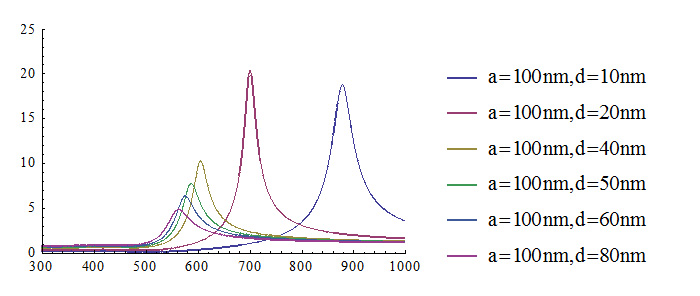Nanocone Array

We study various types of nanostructures, including nanocones, nanowedges, nanogaps and nanospheres, and use the singular optical field near them to enhance the optical signals from the probes, thus eliminating the need for expensive detectors. These nanostructures are fabricated not by expensive instruments but by low-cost wet-etching techniques. We also strive for massively large target number by using optical fiber bundles and conic nanopore arrays. These nanophotonic phenomena include Surface Plasmon Resonance (SPR) on cone tips with singular plasmonic fields and singular scattering at nanotips and plasmonic hotspots of nano sphere assemblies. Low-cost fluorescent and Raman sensing platforms have also been developed. To eliminate target labeling, we have integrated a new hairpin oligo probe with switchable fluorescent reporters to these nanostructures. To design the best geometry for fluorescence enhancement of these hairpin probes, fluorescence quenching near metallic surface needs to be considered in conjunction with plasmonic enhancement. The net fluorescent intensity is a strong function of the distance between molecules and metallic surface. Exploiting field-induced nanoparticle assembly physics in a field-focusing conic nanopore, we have developed a simple and low-cost technique to adjust this spacing dynamically. Several molecular optical sensors were developed for different dynamic ranges and different target numbers. We are integrating these nanophotonic arrays, with more than 10,000 pixels, into a handheld, portable platform that is low-cost and easy to use in low-resource settings. Profiling of a small number of miRNA is one particular application we are pursuing.
Dynamic Nanoparticle Assembly with Tunable Plasmonic Hotspots

Plasmonic hot spots, generated by 20-nm Au nanoparticle (NP) assemblies whose spacing can be dynamically controlled with an external field, are shown to suppress fluorescent quenching effects of metal NPs, such that hair-pin FRET (Fluorescence resonance energy transfer) probes can achieve label-free ultrasensitive quantification. The micron-sized assembly is a result of intense induced NP dipoles by focused electric fields through conic nanocapillaries. The efficient NP aggregate antenna and the voltage-tunable NP spacing for optimizing hot spot intensity endow ultra-sensitivity and large dynamic range (fM to pM). The large shear forces during assembly allow high selectivity (2-mismatch discrimination) and rapid detection (15 min). The large shear rate within the conic nanopore is also used to eliminate non-specific binding.
Smart Coreshell Particle

This research focuses on the localized surface plasmon resonance (LSPR) of nanoparticles. Electromagnetic radiation can excite a coherent oscillation of the surface conduction electrons. For particles much smaller than the incident wavelength, this leads to a plasmon that oscillates locally around the nanoparticle, which is LSPR. We use a dielectric shell to tune the plasmonic frequency and use dye-embedding to endow the medium with positive gain features. Up-Conversion nanoparticles are also assembled with the core-shells to enhance both the intensity and decrease the bandwidth of the shifted plasmonic spectrum. The purpose of the project is to develop an entire library of optical reporters for different multi-target biosensing platforms. The high Kerr coefficients of liquid crystal, whose orientation is controlled by an electric field, is used to achieve nonlinear optical features without a high-power femto-s laser.